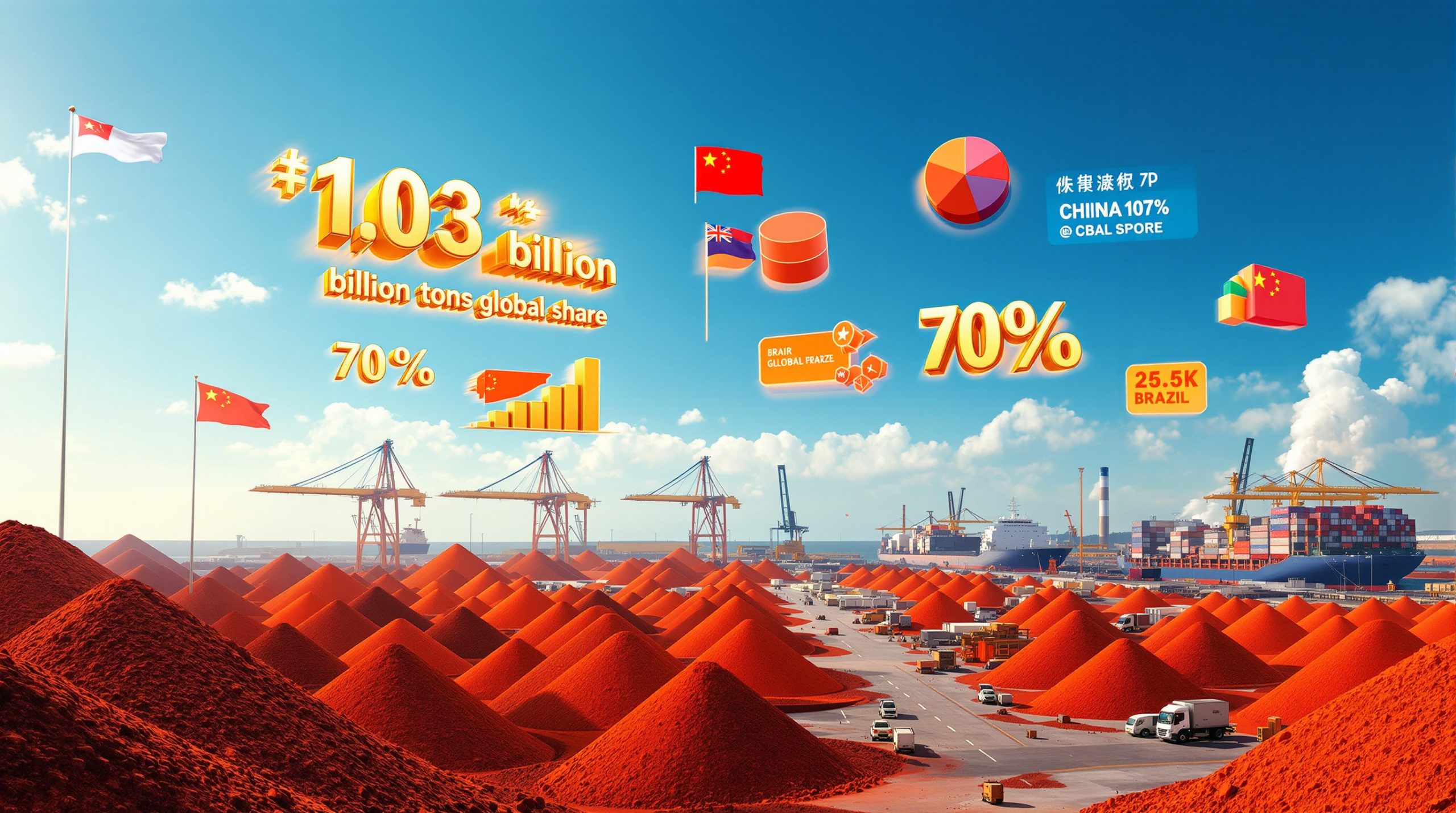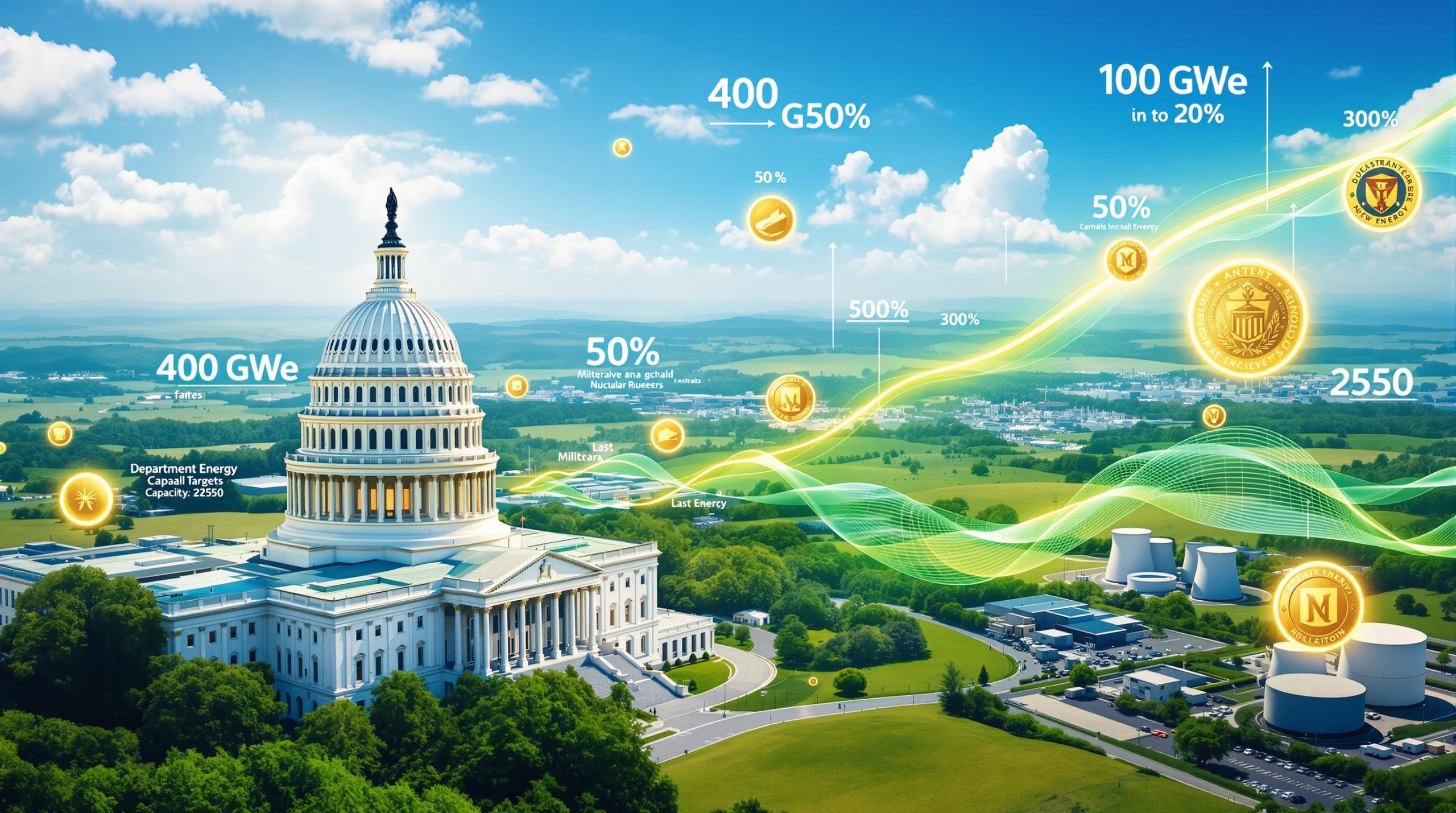Vale's iron ore strategy in India represents a fundamental shift in global commodity markets as the Brazilian mining giant recognizes India as the new frontier for steel production growth. With India's population of 1.6 billion people creating unprecedented infrastructure demands, the country's steelmaking capacity is projected to surge to approximately 300 million tonnes within the next five to seven years, marking an extraordinary expansion trajectory.
This transformation stems from India's massive infrastructure investment requirements across multiple sectors. The nation's development priorities encompass highway construction, railway network modernisation, urban smart city initiatives, and port expansions. Each sector represents substantial steel consumption that validates projections of India's capacity reaching 300 million tonnes by 2032.
Understanding India's Steel Production Transformation
Key Infrastructure Drivers Supporting Steel Demand:
• National highway expansion programmes requiring substantial structural steel
• Railway modernisation projects demanding high-quality steel inputs
• Urban development initiatives across major metropolitan areas
• Port and airport infrastructure upgrades supporting economic growth
India's emergence as the world's second-largest steel producer has already demonstrated its capacity for rapid industrial expansion. The country produced approximately 140 million tonnes of crude steel in 2024, positioning it perfectly to double output within the projected timeframe. This growth trajectory differentiates India from mature markets where steel production has plateaued.
The demographic advantage cannot be understated in Vale's strategic calculations. India's 1.6 billion population represents not just current demand but sustained long-term consumption fundamentals. As urbanisation accelerates and living standards improve, steel-intensive construction and manufacturing will continue expanding, creating a durable market foundation that Vale's iron ore strategy specifically targets.
China's Market Maturation Creates New Opportunities
China's steel production plateau at approximately 1 billion tonnes annually has fundamentally altered global iron ore demand dynamics, creating strategic opportunities for Vale's expansion into emerging markets. According to Reuters, while China maintains its position as the world's largest steel producer, industry experts recognise that the country's output has stabilised with potential decline scenarios over the coming decade.
This market maturation poses significant strategic challenges for Vale, given that China currently accounts for approximately 60% of Vale's total iron ore sales. Such concentration represents substantial geographic dependency risk that necessitates immediate diversification strategies. However, the company's recognition of china steel market challenges has triggered aggressive expansion into alternative Asian markets, with India emerging as the primary target.
Strategic Risk Mitigation Factors:
• Single-market vulnerability: 60% sales concentration in China creates exposure to demand fluctuations
• Production plateau indicators: Chinese steel output showing stabilisation trends rather than growth
• Policy shifts: China's environmental regulations potentially constraining future steel production expansion
• Infrastructure maturity: China's development phase transitioning from rapid expansion to maintenance cycles
Vale's concurrent development of the Vietnamese market demonstrates the multi-country approach underlying this strategic pivot. Vietnamese sales are projected to reach 8 million tonnes in 2025, representing substantial growth from minimal previous volumes. This diversification pattern indicates Vale's systematic approach to reducing Chinese market dependency through geographic spread across Asian growth markets.
Furthermore, the timing of this strategic transition aligns with fundamental shifts in iron ore price trends and global steel production centres. As developed economies mature and infrastructure investment cycles stabilise, emerging economies like India represent the next phase of global steel demand expansion.
How Does Vale's High-Grade Iron Ore Strategy Address India's Quality Requirements?
Vale's premium-grade iron ore strategy creates natural synergies with India's domestic steel production requirements, addressing critical quality gaps in the local supply chain. The company's high-grade ore, containing 65% or higher iron content, provides Indian steelmakers with essential blending opportunities to optimise their production processes and reduce overall costs.
India's domestic iron ore supply typically ranges from 45-60% iron content, creating inefficiencies in steel production due to higher impurity levels and energy consumption requirements. Vale's premium-grade ore enables Indian manufacturers to create optimal blend compositions that significantly improve metallurgical performance while reducing environmental impact through enhanced energy efficiency.
Metallurgical Benefits of Vale's High-Grade Ore:
• Iron Recovery Optimisation: Higher iron content improves blast furnace efficiency and reduces waste
• Energy Efficiency: Reduced energy requirements per tonne of steel produced through improved ore composition
• Slag Chemistry Control: Better impurity management resulting in higher-quality steel output
• Production Yield Enhancement: Improved conversion rates from raw ore to finished steel products
Vale's strategic positioning recognises that premium-grade ore supply addresses critical input optimisation needs for Indian steelmakers seeking to improve both cost competitiveness and environmental performance.
The quality differential becomes particularly significant as India scales production capacity toward 300 million tonnes. Steelmakers operating at such volumes require consistent, high-quality inputs to maintain production efficiency and meet international quality standards. Vale's established expertise in premium ore production and processing provides reliability that domestic suppliers cannot consistently match.
Moreover, sustainability considerations further enhance Vale's value proposition in the Indian market. Premium-grade ore blending reduces energy consumption per tonne of steel produced, directly supporting Indian manufacturers' environmental compliance objectives and operational cost reduction targets. This alignment with both economic and environmental goals strengthens long-term partnership potential.
Competitive Positioning Against Alternative Suppliers
Vale's entry into the Indian iron ore market faces established competition from Australian suppliers who currently dominate imports through geographic proximity and existing relationships. However, Vale's differentiation strategy focuses on premium quality rather than direct price competition, creating unique value propositions for specific Indian steelmaker requirements.
| Supplier Category | Iron Content | Primary Advantage | Market Position |
|---|---|---|---|
| Vale (Brazil) | 65%+ Fe | Premium quality, established global logistics | Rapid market entry phase |
| Australian Suppliers | 60-65% Fe | Geographic proximity, lower freight costs | Dominant current market share |
| Domestic Indian | 45-60% Fe | Zero transportation costs, immediate availability | Limited expansion capacity |
Logistical Considerations:
Australian suppliers maintain significant geographic advantages with shipping distances of approximately 5,500-6,000 kilometres to Indian ports compared to Vale's 13,000-15,000 kilometre routes from Brazilian facilities. This distance differential translates to higher freight costs and longer transit times that Vale must offset through superior ore quality and technical service capabilities.
In addition, Vale's competitive strategy recognises these logistical challenges while leveraging established global shipping infrastructure and premium product positioning. Rather than displacing existing suppliers, Vale targets incremental growth in India's expanding import requirements as domestic production capacity constraints limit local supply expansion.
Consequently, the company's established relationships with major global steelmakers provide credibility and technical expertise that supports market entry. Vale's experience in optimising ore blending for diverse metallurgical requirements enables customised solutions that address specific Indian steelmaker needs beyond simple commodity supply.
Vale's Current Export Volumes and Growth Projections
Vale's iron ore strategy in India demonstrates remarkable market penetration velocity, escalating from minimal presence to substantial import volumes within a single year transition. The company projects 10 million tonnes of ore exports to India in 2025, representing an extraordinary expansion from almost negligible shipments in previous years.
Historical to Projected Growth Timeline:
| Period | India Export Volume | Strategic Significance |
|---|---|---|
| 2023-2024 | Almost none | Minimal market presence |
| 2025 | 10 million tonnes | Major market entry |
| Post-2026 | Expansion trajectory | Novo Carajás capacity supporting growth |
This rapid scaling demonstrates Vale's ability to redirect production capacity and activate supply chain infrastructure quickly when market opportunities emerge. The 10 million tonnes projection for 2025 represents strategic validation of iron ore demand insights and Vale's confidence in securing long-term supply contracts with Indian steelmakers.
Comparative Asian Market Development:
Vale's simultaneous development of Vietnamese markets provides context for the Indian expansion strategy. Vietnam sales are projected to reach 8 million tonnes in 2025, indicating a coordinated multi-market approach across growing Asian economies. The combined India and Vietnam volume projections totalling 18 million tonnes represent substantial geographic diversification from Chinese market dependence.
Production Capacity Investments Supporting Asian Growth
Vale's Novo Carajás programme represents the strategic foundation enabling rapid expansion into Indian and other Asian markets, with total investment commitments of 70 billion reais ($13.14 billion USD) through 2030. This massive capital allocation demonstrates management confidence in sustained Asian demand growth and positions Vale to capture market opportunities as they materialise.
Novo Carajás Programme Investment Details:
| Investment Metric | Value | Timeline |
|---|---|---|
| Total Programme Investment | $13.14 billion USD | Through 2030 |
| Project Completion Status | 80% complete | Current status |
| Operations Commencement | Late 2026 | Scheduled timeline |
| Additional Annual Capacity | 20 million tonnes | Iron ore production increase |
The Novo Carajás programme's 80% completion status and late 2026 operational target create perfect timing alignment with India's projected import requirements, enabling Vale to meet expanding Asian demand precisely when capacity becomes available.
The 20 million tonnes of additional annual iron ore capacity from Novo Carajás provides substantial flexibility for Vale's Asian market expansion beyond current projections. With India requiring 10 million tonnes in 2025 and Vietnam demanding 8 million tonnes, the additional capacity enables further growth in both markets plus expansion into additional Southeast Asian economies under evaluation.
Recent Operational Performance Supporting Expansion:
Vale's Q3 2025 results demonstrate operational excellence supporting the Asian expansion strategy:
• Sales Growth: 5% year-over-year increase indicating market resilience
• Production Achievement: Highest iron ore output since 2018, validating capacity expansion capabilities
• Financial Performance: Strong quarterly results supporting continued investment in growth markets
Beyond iron ore expansion, Vale's strategic planning includes doubling copper output by 2035, indicating diversified commodity growth strategies while maintaining iron ore as the core business foundation. This balanced approach provides multiple revenue streams supporting the substantial Asian market investments.
Strategic Fit Within Vale's Broader Asian Market Diversification
Vale's iron ore strategy in India forms the centrepiece of a comprehensive Asian market diversification initiative designed to reduce dependence on Chinese demand while capturing growth opportunities across multiple emerging economies. This systematic approach involves simultaneous market development across India, Vietnam, and additional Southeast Asian markets under evaluation, reflecting the company's commitment to global mining expansion.
Asian Market Portfolio Development:
| Target Market | 2025 Projected Volume | Strategic Role |
|---|---|---|
| India | 10 million tonnes | Primary growth market |
| Vietnam | 8 million tonnes | Secondary expansion market |
| Southeast Asia | Under evaluation | Future development pipeline |
| China | ~60% of current sales | Mature market maintenance |
This diversification strategy acknowledges fundamental shifts in Asian economic development patterns. While China maintains its position as the world's largest steel producer, the growth momentum has shifted to emerging economies with expanding infrastructure needs and industrial development requirements.
Risk Mitigation Through Geographic Spread:
Vale's multi-country approach provides several strategic advantages:
• Demand Stability: Reducing concentration risk through diverse market exposure
• Price Optimisation: Multiple markets enabling better pricing negotiations and contract terms
• Supply Chain Resilience: Diversified shipping routes and destination ports reducing logistical vulnerabilities
• Growth Optionality: Flexibility to allocate production capacity based on market conditions and opportunities
Furthermore, the company's ability to develop multiple markets simultaneously demonstrates sophisticated market entry capabilities and established global logistics infrastructure. Vale's Brazilian production facilities can efficiently serve diverse Asian destinations through optimised shipping routes and port capabilities.
Infrastructure and Logistics Considerations
Vale's Asian market expansion requires substantial logistical coordination and infrastructure optimisation to serve diverse destinations efficiently while maintaining cost competitiveness against regional suppliers. The company leverages established global shipping networks and Brazilian port capabilities to support multi-country expansion strategies.
Shipping Route Optimisation:
From Brazilian ports to Asian destinations, Vale manages complex logistics involving:
• Route Planning: Optimising vessel capacity and scheduling across multiple Asian ports
• Seasonal Considerations: Managing monsoon impacts on Indian port operations and shipping schedules
• Storage Infrastructure: Developing adequate storage and distribution networks in destination markets
• Port Capacity: Ensuring receiving ports can handle increasing import volumes efficiently
The logistics complexity increases significantly when serving multiple markets simultaneously. Vale must coordinate shipments to Indian ports, Vietnamese facilities, and additional Southeast Asian destinations while maintaining reliable delivery schedules and cost-effective transportation.
Supply Chain Development Requirements:
Vale's expansion into Asian markets necessitates:
• Local Partnerships: Establishing relationships with port authorities and logistics providers
• Quality Assurance: Implementing testing and certification protocols meeting diverse national standards
• Contract Management: Negotiating long-term supply agreements balancing volume commitments with price flexibility
• Technical Support: Providing metallurgical expertise and ore blending guidance to Asian steelmakers
Vale's systematic approach to Asian market diversification recognises that successful expansion requires not just production capacity but comprehensive supply chain development and local market expertise.
Financial Performance Indicators Supporting Strategic Direction
Vale's financial performance in Q3 2025 provides strong validation for the company's Asian expansion strategy, with operational metrics demonstrating both production capability and market resilience. The combination of sales growth, record production levels, and strategic investment execution supports management confidence in pursuing aggressive market diversification.
Q3 2025 Performance Highlights:
| Performance Metric | Result | Strategic Significance |
|---|---|---|
| Sales Growth | 5% year-over-year | Market demand resilience validation |
| Iron Ore Production | Highest since 2018 | Production capacity confirmation |
| Asian Market Development | Expanding beyond China | Geographic diversification success |
| Investment Execution | Novo Carajás 80% complete | Capital allocation effectiveness |
The 5% sales growth achievement during a period of Chinese market stabilisation demonstrates Vale's ability to maintain revenue expansion through strategic diversification. This performance validates management's thesis that emerging Asian markets can compensate for mature market demand plateaus, supporting broader mining industry evolution trends.
Record iron ore production levels since 2018 provide operational validation for Vale's capacity to meet expanding Asian market commitments. The production achievement indicates successful operational optimisation and positions the company to fulfil projected India (10 million tonnes) and Vietnam (8 million tonnes) supply requirements while maintaining existing market obligations.
Investment Allocation and Return Expectations
Vale's massive capital allocation through the Novo Carajás programme represents strategic confidence in long-term Asian market opportunities, with the $13.14 billion investment through 2030 positioning the company for sustained market leadership in premium iron ore supply.
Capital Investment Strategic Framework:
• Novo Carajás Programme: $13.14 billion commitment through 2030
• Additional Annual Capacity: 20 million tonnes iron ore production increase
• Timeline Execution: 80% project completion, late 2026 operations start
• Diversified Growth: Copper production doubling plans by 2035
The investment timeline creates optimal alignment with Asian market demand expansion. Vale's additional 20 million tonnes capacity becomes available in late 2026, precisely when India's steel production scaling requires increased high-grade ore imports beyond initial 10 million tonne requirements.
Asset Optimisation Supporting Growth:
Vale's strategic portfolio management includes non-core asset divestments to optimise capital allocation toward high-growth opportunities. The company is considering the sale of its Thompson nickel mine in Canada, as reported by TradingView, reflecting focus on core iron ore and copper operations while capitalising on market interest in nickel assets.
Vale's financial discipline combines massive growth investments in Asian markets with strategic asset optimisation, ensuring capital allocation focuses on highest-return opportunities while maintaining balance sheet strength.
Return expectations from Asian market expansion encompass both volume growth and premium pricing opportunities. Vale's high-grade ore commands quality premiums in markets like India where domestic supply quality limitations create natural demand for superior inputs. This pricing power, combined with volume expansion, supports robust return projections justifying the substantial investment commitments.
Challenges and Opportunities in the Indian Iron Ore Market
Market Entry Barriers and Mitigation Strategies
Vale's iron ore strategy in India faces several established market entry barriers that require sophisticated mitigation approaches. Australian suppliers currently dominate Indian iron ore imports through geographic proximity advantages, established relationships with major Indian steelmakers, and competitive freight cost structures that Vale must overcome through value proposition differentiation.
Primary Market Entry Challenges:
• Established Supplier Relationships: Australian companies maintain long-term contracts with major Indian steelmakers
• Geographic Disadvantage: 13,000-15,000 km shipping distances vs. 5,500-6,000 km for Australian suppliers
• Freight Cost Differential: Higher transportation costs requiring premium product positioning
• Market Education Requirements: Indian steelmakers need education on Vale's ore quality benefits
Vale's mitigation strategy focuses on quality differentiation rather than price competition. The company's 65%+ iron content ore provides metallurgical advantages that justify freight cost premiums through improved steelmaking efficiency, reduced energy consumption, and enhanced product quality. This technical value proposition creates opportunities for market penetration despite cost disadvantages.
Strategic Mitigation Approaches:
• Technical Partnership Development: Providing metallurgical expertise and blending optimisation services
• Long-term Contract Negotiations: Offering volume commitments and price stability to secure market share
• Quality Certification Programmes: Implementing rigorous testing protocols meeting Indian standards
• Local Market Investment: Developing storage and distribution infrastructure supporting reliable supply
The company's established global logistics network and financial capacity enable sustained investment in market development activities that smaller competitors cannot match. Vale's ability to provide technical support, financing options, and supply chain reliability creates differentiation beyond simple commodity pricing.
Regulatory and Policy Environment Considerations
India's regulatory environment presents both opportunities and challenges for international iron ore suppliers, with government policies supporting domestic steel industry expansion while maintaining oversight of import dependencies. Vale's market entry strategy must navigate complex policy frameworks while aligning with India's industrial development objectives.
Key Regulatory Considerations:
• National Steel Policy Implementation: Government targets supporting 300 million tonnes capacity expansion
• Import Duty Structures: Tariff policies affecting international ore competitiveness
• Environmental Regulations: Sustainability requirements influencing supplier selection criteria
• Trade Agreement Impacts: Bilateral relationships affecting market access and pricing
India's National Steel Policy creates favourable conditions for international suppliers by recognising domestic ore quality limitations and supporting strategic imports to achieve production targets. The policy framework acknowledges that achieving 300 million tonnes steel capacity requires significant high-grade ore imports, directly supporting Vale's market entry rationale.
Government Infrastructure Investment Supporting Demand:
India's substantial infrastructure spending commitments create sustained steel demand that transcends individual policy changes:
• Highway Development Programmes: National highway expansion requiring structural steel
• Railway Modernisation: High-speed rail and freight network improvements
• Urban Development Initiatives: Smart city projects and metropolitan infrastructure
• Port and Airport Expansion: Transportation infrastructure supporting economic growth
These infrastructure commitments, backed by multi-year budget allocations, provide demand stability that supports Vale's long-term investment in the Indian market. The scale of infrastructure development ensures sustained steel consumption regardless of short-term policy fluctuations.
Positioning Vale for Long-Term Global Market Leadership
Competitive Advantages in Premium Ore Segments
Vale's strategic focus on premium-grade iron ore segments positions the company for sustained global market leadership through quality differentiation and technical expertise that competitors cannot easily replicate. The company's established capabilities in high-grade ore production, combined with sophisticated global logistics networks, create sustainable competitive advantages in rapidly growing markets.
Core Competitive Differentiators:
• Premium Ore Quality: Consistent 65%+ iron content exceeding industry standards
• Technical Expertise: Advanced metallurgical knowledge supporting customer optimisation
• Global Infrastructure: Established logistics networks enabling reliable supply chain performance
• Financial Capacity: $13.14 billion Novo Carajás investment demonstrating capital strength
Vale's technical capabilities extend beyond simple ore extraction to comprehensive metallurgical support services that enhance customer relationships and create switching costs. The company's expertise in ore blending optimisation provides Indian steelmakers with tailored solutions that improve production efficiency while reducing operational costs.
Environmental and Sustainability Leadership:
Vale's commitment to environmental responsibility creates additional competitive advantages as global steel producers increasingly prioritise ESG compliance in supplier selection. The company's high-grade ore enables improved energy efficiency in steel production, directly supporting customer sustainability objectives while strengthening long-term partnerships.
The premium ore focus also provides natural protection against commodity price volatility through quality premiums that remain stable during market downturns. While lower-grade ore suppliers face direct price competition, Vale's quality differentiation enables margin preservation across market cycles.
Future Market Scenarios and Adaptability
Vale's strategic positioning anticipates multiple future market scenarios while maintaining flexibility to adapt as global steel production patterns continue evolving. The company's diversified approach across multiple Asian markets provides resilience against individual country-specific risks while capturing growth opportunities as they emerge.
Market Evolution Scenarios:
• India Growth Acceleration: Steel capacity expansion beyond 300 million tonnes creating additional demand
• Southeast Asian Development: Vietnam and other regional markets scaling industrial production
• Chinese Market Stabilisation: Maintained high-volume demand despite growth plateau
• Technology Disruption: Electric arc furnace adoption changing ore specification requirements
Vale's strategic framework recognises that while China remains the world's largest steel producer, sustainable growth opportunities have shifted to emerging economies with expanding infrastructure needs and industrial development requirements.
The company's investment strategy balances immediate market opportunities with long-term adaptability. The Novo Carajás programme's 20 million tonnes additional capacity provides flexibility to adjust production allocation across markets based on demand evolution and competitive dynamics.
Adaptability Mechanisms:
• Flexible Production Allocation: Ability to redirect capacity across Asian markets based on demand conditions
• Multi-Commodity Strategy: Iron ore dominance complemented by copper expansion reducing single-commodity risk
• Technology Integration: Continuous investment in production efficiency and environmental performance
• Strategic Partnerships: Long-term relationships enabling market intelligence and demand forecasting
Broader Implications for Global Iron Ore Trade Patterns
Shifting Supply Chain Dynamics
Vale's iron ore strategy in India represents a fundamental shift in global commodity trade patterns, moving from concentrated single-market dependencies toward diversified regional supply networks. This transformation has significant implications for pricing stability, supply chain resilience, and competitive dynamics across the international iron ore market.
Global Trade Pattern Evolution:
The traditional model of dominant supplier-customer relationships is evolving toward multi-source supply strategies that reduce vulnerability to individual market disruptions. Vale's Asian diversification exemplifies this trend, with the company transitioning from 60% Chinese market dependence toward balanced regional distribution across India, Vietnam, and additional Southeast Asian markets.
Supply Chain Resilience Improvements:
• Geographic Risk Mitigation: Multiple destination markets reducing single-country exposure
• Demand Stability Enhancement: Diversified customer base providing revenue predictability
• Shipping Route Optimisation: Alternative logistics pathways reducing transportation vulnerabilities
• Price Discovery Improvement: Multiple markets enabling better pricing negotiations and contract terms
This diversification creates positive implications for iron ore pricing stability by reducing extreme volatility associated with single-market demand fluctuations. As more suppliers adopt similar strategies, the global market becomes less susceptible to individual country-specific economic cycles or policy changes.
Long-Term Industry Transformation Indicators
Vale's strategic pivot toward India and other emerging Asian markets signals broader structural changes in global steel production and iron ore consumption patterns. These developments indicate permanent shifts in industrial development centres rather than temporary market adjustments.
Fundamental Industry Transformation Trends:
• Production Centre Migration: Steel production growth shifting from developed to emerging economies
• Quality Premium Evolution: Premium-grade ore commanding increasing value premiums
• Sustainability Integration: Environmental performance becoming critical supplier selection criteria
• Technology Adoption Acceleration: Advanced steel production methods changing ore specification requirements
The migration of steel production growth from mature economies like China to emerging markets creates sustained demand for high-quality iron ore imports. As countries like India scale production capacity toward 300 million tonnes, the global trade balance shifts toward regions with expanding infrastructure needs and industrial development requirements.
Technology and Quality Convergence:
Modern steel production increasingly requires consistent, high-quality inputs to achieve efficiency and environmental targets. This technological evolution favours suppliers like Vale who can provide premium-grade ore with reliable specifications, creating structural advantages that transcend traditional cost-based competition.
The convergence of technological advancement and environmental regulation creates permanent demand shifts toward premium ore suppliers capable of supporting efficient, sustainable steel production processes.
Market Psychology and Investment Implications:
Vale's success in rapidly penetrating the Indian market (escalating from minimal presence to 10 million tonnes projected for 2025) demonstrates that established market relationships can be disrupted through superior value propositions. This creates both opportunities and competitive pressures across the global iron ore industry.
The substantial capital investments required for market entry and capacity expansion ($13.14 billion for Vale's Novo Carajás programme) indicate that successful global market leadership requires significant financial resources and long-term strategic commitment. Smaller competitors may find it increasingly difficult to compete in premium market segments without similar investment capabilities.
These dynamics suggest continued consolidation pressures in the iron ore industry, with technically capable, financially strong companies like Vale gaining market share while smaller producers face increasing competitive challenges in rapidly evolving global markets.
Looking to Capitalise on Asia's Mining Boom?
Discovery Alert's proprietary Discovery IQ model delivers instant notifications on significant ASX mineral discoveries, empowering investors to identify actionable opportunities in commodity markets experiencing major transformations like those reshaping global iron ore trade. Understand how historic discoveries have generated substantial market returns whilst positioning yourself to capture the next major breakthrough with a 30-day free trial at Discovery Alert.




